■遣米使節
正使新見豊前守・副使村垣淡路守・監察小栗豊後守(のち上野介)の3人が使節で、それぞれ9人の従者を連れ、ほかに随員や従者で計77人が出かけた。小栗の従者の一人佐藤藤七は権田村の名主で、農民としても初の世界一周を果たした。
|
■ Mission to the United States
The three envoys were Buzennokami Shinmi, the sinior envoy, Awajinokami Muragaki, the deputy envoy, and Bungonokami Oguri (later become Kozukenosuke Oguri), the censor, each with nine attendants, and there were a total of 77 people in the mission including all the attendants and followers. One of Oguri's followeres, Toshichi Sato, was the village master of Gonda village and the first farmer to circumnavigate the globe.
|
■パナマで株式会社を理解
パナマにはまだ運河はなかったので、パナマ鉄道の汽車で地峡を越えて大西洋側のアスペンウオールへ向かう。列車の中で鉄道建設の費用とその調達方法を質問した小栗上野介は、「総経費は700万ドル。国内の富裕の者から資本を提供してもらって組合(コンパニー)を作り、出来上がると利用者からの利益を分配してゆく」というアメリカ側の説明を聞いて、民間資本の株式会社で新しい事業をおこせることを理解した。
1867年(慶応三)、日本で最初の株式会社「兵庫商社」を設立するヒントはこのときの経験にあった。
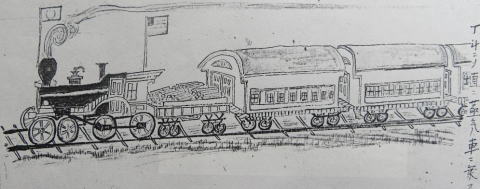
■ Understanding how a stock company works, in Panama
Since Panama did not yet have a canal, they took a train on the Panama Railroad across the isthmus of Panama to Aspenwall on the Atlantic side. On the train, Kozukenosuke Oguri asked about the cost of building the railroad and how it would be financed, and the answer was, "The total cost is $7 million. The capital is provided by wealthy people in the country to form a company, and the profits from the users are distributed once the company is established." When he heard the American side's explanation, he understood that a new business could be started by a private joint-stock company with private capital.
This experience gave him the hint to establish Japan's first stock company, Hyogo Shosha, in 1867 (Keio 3).
パナマ鉄道 この汽車の絵は佐藤藤七の『渡海日記』による。
パナマ鉄道建設の関連小説『黄金の馬』が刊行された(2014年三冬社)。
Panama Railroad - The drawing of a train is from “Tokai Nikki (Diary of Crossing the Pacific Ocean)” by Toshichi Sato.
"The Golden Horse" - A novel about the constructrion of the Panama Railrowd was published
by Santohsha in 2014.
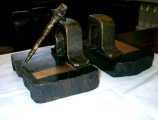 パナマ鉄道のレール パナマ鉄道のレール
運河の建設に関連して一部を迂回線としたため不要となったレールを切断してブックエンドの記念品とした。中空になった珍しいレールとビス(横須賀市自然人文博物館蔵・平成15年6月27日、この品が博物館に入った日に見せていただいた)
The rails of the Panama Railroad:
The rails, which were no longer needed due to the construction of the Panama Canal that bypassed part of the line, were cut and used as a bookend souvenir. In the photo are a rare hollow rail and a screw (Yokosuka City Museum
- Nature and Humanity, WC June 27, 2003, the day the items were delivered
to the museum).
アスペンウオール(現在のコロン)から、迎えの船ロアノウク号(3400トン)に乗ってカリブ海を渡りワシントンに上陸した。
From Aspenwool (present-day Colon), they boarded the USS Roanoke (3,400 tons), a welcoming ship, and crossed the Caribbean Sea to land in Washington.
■アメリカで
閏三月二十八日、ホワイトハウスで大統領ブキャナンに謁見し、日米修好通商条約批准書を渡す。
■ In the United States:
They had an audience with President Buchanan at the White House on WC May 18, 1860 (JC leap March 28 of Man'en 1), and handed him a letter of ratification of the Japan-U.S. Treaty of Amity and Commerce.
四月四日午後に、ワシントン海軍造船所を見学。記念写真を撮る。ここはたんなる造船だけの設備ではなかった。鉄の塊を溶かして蒸気機関や歯車などさまざまな部品を作り、造船のほかに、大砲、小銃、砲弾や弾丸、ロープも帆布も次々に作られる総合工場であり、それらの工作の原動力はすべて蒸気機関であった。
*この見学が後の日本の産業革命の地横須賀造船所の建設に活かされる。*
On WC May 25, 1860 (JC April4 of Man'en 1), they visited the Washington Naval Shipyard. They took a commemorative
photo. It was not just a shipbuilding facility. In addition to shipbuilding,
it was a comprehensive factory where cannons, rifles, shells, bullets,
ropes, and canvas were made one after another, all powered by steam engines.
Oguri's experience at the Washington Naval Shipyard was later utilized in
the construction of the Yokosuka Shipyard, the site of Japan's industrial
revolution.
ワシントン海軍造船所を見学
visited the Washington Naval Shipyard
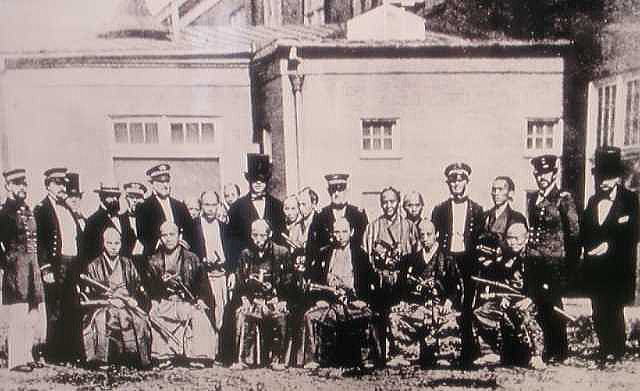
■ワシントン海軍造船所見学 1860萬延元年四月四日(西暦5月24日・木)午後2時〜見学のあと
|
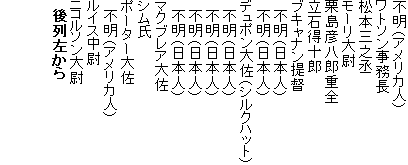 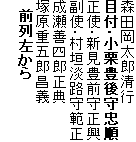
*上記人物説明は「フランクレスリーイラスト新聞」1860年6月9日 による
|
(Photo)
Front row from right:
Okataro Kiyoyuki Morita
Bungonokami (later Kozukenosuke) Tadamasa Oguri, Censor
Buzennokami Masaoki Shinmii, Senior envoy
Awajinokami Norimasa Muragaki, Deputy envoy
Zenshiro Masanori Naruse
Jugoro Masayoshi Tsukahara
Back row from right:
Unknown (American)
Watson, Secretary General
Sannojo Matsumoto
Captain Maury
Hikohachiro Shigemata Kurishima
Tokujuro Tateishi
Admiral Buchanan
Unknown (Japanese)
Unknown (Japanese)
Colonel du Pont (with silk hat)
Unknown (Japanese)
Unknown (Japanese)
Unknown (Japanese)
Unknown (Japanese)
Colonel McBrayer
Mr. Sim
Colonel Porter
Unknown (American)
Lieutenant Lewis
Captain Nicholson
*The above description is from the Frank Leslie's Illustrated Newspaper, WC June 9, 1860.
|
■四月二十五日、フィラデルフィアの造幣局に行きドルと小判の交換比率の不公平を指摘して、全量分析実験に立ち会う。「ノーといった最初の日本人」といわれるゆえん。
■On WC June 14, 1860 (JC April 25 of Man'en 1), Oguri went to the Mint in Philadelphia to point out the inequity of the exchange ratio between dollars and Japanese oval gold coins, and witnessed an analysis experiment. This is why Oguri is called "the first Japanese to say no" to Americans.
|
■帰路につく
ニューヨークから最新鋭の軍艦ナイアガラ号で帰国の途についた。
ロアンダで見たもの
六月二十二日、ロアンダ港(アンゴラ)で数人の黒人が首鎖でつながれて荷物を運ばされるのを見る。鎖のはじはポルトガル人が握り、右手にムチを持っている。人間を家畜のように扱う姿にショックを受けた。
■ Returning to Japan:
They were on their way home from New York on the USS Niagara, a state-of-the-art warship.
What they saw in Luanda:
On WC August 8, 1860 (JC June 22 of Man'en 1), at the port of Roanda (Angola), they saw several black people being chained by the neck and made to carry burdens. The beginning of the chain was held by a Portuguese man, who was holding a whip in his right hand. They were shocked to see people treated like cattle.
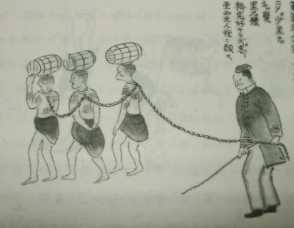 荷物を運ばされる奴隷。 荷物を運ばされる奴隷。
(小栗忠順従者・木村鉄太『航米記』より)
Drawing: Slaves forced to carry loads.
("Kobeiki" by Tetsuta Kimura, a follower of Tadamasa Oguri)
香港で見たもの
20年前のアヘン戦争でイギリスに敗れて借り上げられ、中国の土地でありながら白人が来ると中国人は道の端によける島だった。日本人を見ようと群がる中国人をどかすため、英人警護がいきなり鉄のこん棒で中国人を殴りつけるのを見た仙台藩士玉蟲左太夫は「胸が痛む」と書いている。
随行した権田村名主・佐藤藤七
小栗忠順の従者9人のうちに権田村の名主佐藤藤七が含まれていた。通称「渡海日記」および「諸用留」を残し、とくにパナマで乗った汽車の絵はいきいきと描かれている。
What I saw in Hong Kong:
The island was leased to the British after they were defeated in the Opium
War 20 years ago, and although it was Chinese land, the Chinese would move
to the side of the road when white men appeared. Chinese people flocked
to the street to see the Japanese, but in an attempt to get rid of them,
a British guard suddenly hit them with an iron club. Seeing this, Sadayu
Tamamushi, a samurai of the Sendai clan, wrote, "It hurts my heart."
Toshichi Sato, the village master of Gonda Village, who accompanied the mission:
Among the nine followers of Tadamasa Oguri was Toshichi Sato, the village master of Gonda Village. He left behind “Tokai Nikki (Diary of Crossing the Pacific Ocean)” and "Shoyotodome (memo pad)." His drawing of the train ride in Panama are particularly vivid.
|
■帰国した日本は
攘夷の国
サンフランシスコ到着の6日前の三月三日、桜田門において一行を派遣した責任者の大老井伊直弼が暗殺され、開国を非とする攘夷鎖国のテロ行為が横行、攘夷熱に浮かれ、はやり病も火事や地震もすべて外国人のせい、毛唐かぶれは打ち殺せ、とする狂気が渦巻く国になっていた。
作家司馬遼太郎は『明治という国家』で、遣米使節一行77人と咸臨丸の一行99人合わせて176人がアメリカの最新の文化を見ていながら、ほとんどの者が帰国後にそれを積極的に語ることなく口を閉ざしていたなかで、小栗上野介、福沢諭吉、勝海舟の3人が後の日本の近代化に生かす仕事を残した。「小栗上野介は明治の父といえる」と書いている。
外国を模範とすべし(小栗忠順の言葉)
「…使節が帰朝の時に当り、鎖攘の議論漸く朝野に熾なりければ皆口を緘して黙したるに、小栗一人は、憚る所なく米国文明の事物を説き、「政治武備商業製造等に於ては、外国を模範として我国の改善を謀らざる可からず」と論じて幕閣を聳動(しょうどう・ひどく驚かし、動揺させる)せしめたり
」
(福地源一郎『幕末政治家』「小栗上野介」明治三十三年)
意訳:
遣米使節が帰国した時は「鎖国だ、攘夷だ」との過激な主張がさかんになっていて、みな外国の事情など語れず口を閉ざしていたが、小栗忠順はただ一人遠慮することなくアメリカ文明の優れたところを語り、「政治・軍備・商業・製造については外国を模範とし、我が国の改善を図らなければならない」と語って、幕府の閣僚たちを驚かし動揺させた。(福地源一郎『幕末政治家』「小栗上野介」意訳 明治三十三年)
|
■ When they returned to Japan, they found:
A nation of expulsion of foreigners:
On WJ March 24, 1860 (JC March 3 of Ansei 7), six days before their arrival in San Francisco, Naosuke Ii, the grand elder in the Tokugawa shogunate responsible for dispatching the mission, was assassinated at Sakuradamon Gate of the Edo Castle. The country was in the grip of an insanity that was driven by a fever for expulsion of foreigners, a desire to blame foreigners for every epidemic, fire, and earthquake, and a desire to kill anyone who was a follower of aliens.
In his book, "Meiji, a Nation," author Ryotaro Shiba wrote that while 176 people, including 77 members of the mission to the United States and 99 members of the Kanrin Maru mission, saw the latest American culture, most of them kept their mouths shut and did not speak about it after returning to Japan. However, three of them, Kozukenosuke Oguri, Yukichi Fukuzawa, and Kaishu Katsu, left behind work that would be utilized in the modernization of Japan. Shiba further wrote, "Kozukenosuke Oguri can be called the father of the Meiji era."
Foreign countries should be taken as a model
(words of Tadamasa Oguri)
When the mission returned to Japan, people in Japan were in the midst of a heated debate over the need for national seclusion and the expulsion of foreigners, and many members of the mission were reluctant to talk about foreign affairs. However, Tadamasa Oguri was the only one who did not shy away from talking about the superiority of American civilization. "In politics, armaments, commerce, and manufacturing, we must follow the example of foreign countries and improve our own," he said, surprising and upsetting the shogunate ministers.
(The section of "Kozukenosuke Oguri" in “The Political Figures at the End of the Edo Period” by Gen’ichiro Fukuchi, 1903 or Meiji 33)
|
■ 咸臨丸には―三つの虚構あり
虚構1、「日本人初の太平洋横断」…じつは初の太平洋横断は別の船
1610(慶長15)年、家康の命により京都の商人田中勝介はメキシコへ渡る。咸臨丸より250年前のこと。
その3年後、
1613(慶長18)年、伊達政宗の正使として支倉常長が サン・ファン・バウティスタ号で太平洋を横断し、メキシコからスペイン〜ローマに至り再び太平洋を横断して帰 国している。
勝海舟は「軍艦として初の太平洋横断」と 語っているが、明治以後日本人の国威発揚意識から、軍艦としての文字を抜いて教えられている。「咸臨丸病の日本人」参照
虚構2、「日本人だけで航海」…じつは大暴風雨で米人船員が操船
北太平洋の嵐に遭遇しほとんどの日本人は船酔いでダウンしたた め、米人船員が操船して航海を続けた。動けた日本人はジョン万次郎ほか2,3人だけ。
帰国 にあたって木村は「心配だから」とまた米人船員4人を頼みコック1人で計5人に乗ってもらっ てサンフランシスコから帰途についた。
帰国後、勝海舟は「外国人の手はすこしも借らな いでアメリカへ行った」(『氷川清話』)として、ブルック大尉に世話になったことはいっさい語っていない。
氷川清話には「アメリカ人が・・・船底の掃除やペンキの塗り替えなどをすっかりしてくれた」と、いかにも初の太平洋横断に感激したアメリカ人がやってくれたように語っているが、船の修理の手配やさらに費用をすべてアメリカ政府の負担とすることまで、計らってくれたのはブルック大尉である。
いまでも「アメリカ人が帰国を希望したので乗せてやった」と書く学者がいる。日本人はいい気になりすぎると思う。
虚構3、「木村摂津守喜毅・勝海舟は遣米使節」…じつは木村摂津守喜毅も勝海舟も遣米使節には任命されていない。
浦賀発一月十二 日ー二月二十六日着サンフランシスコ閏三月十八日発−ハワイー五月五日浦賀着
じつは船酔いでダウンした勝海舟
咸臨丸はパウハタン号の使節一行の護衛船 という名目で派遣され、軍艦奉行木村攝津守喜毅が責任者。勝海舟は教授方取扱という艦長 より下の役。その他にアメリカのブルック大尉以下10人の米人船員が頼まれて乗り組んで いた。
ブルックらは横浜付近を測量中に台風で測量船フェニモア・クーパー号が壊れ、帰国しようと横浜に滞在していたので木村が頼んだ。「俺たち日本人だ けで大丈夫」と反対した勝海舟は「航海中船酔いが激しく、ほとんど船室で寝たきりだった
」とブルック大尉の「咸臨丸日記」に、そのときの様子が詳しく書かれ、ニューヨークタイムズ(4月17日号)にも報じられている。
ブルックはしかし、12日後にサンフランシスコに到着した使節に「勝海舟はよくやった」とだけ報告している。海の男らしいいい男、と言える。
*この史実は遣米使節100年記念「遣米使節史料集成」(風間書房)にブルックのなまなましい日記が公刊されて、初めて世に出ることになった(それまではNYタイムズなどに少し書かれている程度だったから、広まらなかった)。以来半世紀経過して、この話はすっかり定着した。ささやかな歴史が正されるのに半世紀かかったということです。
■ではなぜ咸臨丸・勝海舟が有名になったのか…こちらをご覧下さい。「咸臨丸神話」
■「岩倉具視使節団の米欧回覧」(明治4〜6年)が「日本人初の世界一周旅行記」、とパンフレットでうたう本が慶応義塾大学出版会からでました。明治以来、遣米使節の業績を隠し、幕府政治を否定してきた歴史教育のマイナスの成果、がこういう形で現れているといえましょう。
『岩倉使節団の米欧回覧』(リンク)をご覧下さい。(2006・平成18年10月)
|
■ The Kanrin Maru and Three Fictions
Fiction 1: "The First Japanese to Cross the Pacific Ocean" ... In fact, the first crossing of the Pacific was made by a different Japanese on a different ship.
In 1610, Shosuke Tanaka, a merchant from Kyoto, traveled to Mexico on the order of Ieyasu Tokugawa and came back to Japan in 1611. It was 250 years before the Kanrin Maru.
Also, in 1613, Tsunenaga Hasekura, the official envoy of Masamune Date, crossed the Pacific Ocean on the San Juan Bautista, sailed across the Atlantic Ocean from Mexico to Spain and Rome, and then crossed the Atlantic and Pacific Oceans again to return home. It was 247 years before the Kanrin Maru.
Kaishu Katsu said that it was the first crossing of the Pacific Ocean as
a warship, but since the Meiji era (1868-1912), the word "warship"
has been omitted from the text because of Japanese people's sense of national
prestige. See "Japanese people with the 'Kanrin Maru disease'."
Fiction 2: "Sailing with the Japanese alone" ... In fact, the ship was maneuvered by American sailors during the voyage, especially in major storms.
The ship encountered storms in the North Pacific Ocean and most of the Japanese became seasick, so the American sailors took control of the ship and continued the voyage. The only Japanese who were able to work were John Manjiro and a few others. For the return voyage to Japan, Settsunokami Kimura who worried about the voyage had five Americans, namely four sailors and a cook, board the ship and they sailed back from San Francisco with the help of the Americans.
After returning to Japan, Kaishu Katsu said, "We went to the U.S. without any help from foreigners," and he never mentioned that they were taken care of by Captain Brooke and some Americans ("Hikawa Seiwa"). However, it was Captain Brooke who arranged for the ship to be repaired and for all the expenses to be borne by the U.S. government.
Even today, there are scholars who write that "the Americans wanted to return home, so we gave them a ride." There are some Japanese who flatter themselves too much.
Fiction 3: "Settsunokami Yoshitake Kimura and Kaishu Katsu are envoys to the U.S."... In fact, neither Kimura nor Katsu were appointed as envoys to the U.S.
They departed from Uraga on WC February 3, 1860 (JC January 12 of Ansei 7), arrived in San Francisco on WC March 18, 1860 (JC February 26 of Ansei 7), departed from San Francisco on WC April 8, 1860 (JC March 18 of Man'en 1), called at Hawaii and arrived in Uraga on WC June 26, 1860 (JC May 5 of Man'en 1).
In fact, Kaishu Katsu was down with seasickness through the voyage.
The Kanrin Maru was dispatched to escort the mission of the USS Powhatan, and the warship magistrate Settsunokami Kimura was in charge. Kaishu Katsu served in a subordinate role to the captain Kimura in the name of professor. In addition, Captain Brooke and ten other American sailors were on board at the request of Kimura.
In August 1959, Brook and his crew were surveying near Yokohama on board their survey ship, the Fenimore Cooper, but the ship was destroyed by a typhoon on August 23. When they were staying in Yokohama to return to the U.S., Kimura asked them to board the Kanrin Maru.
Kaishu Katsu opposed the boarding of Captain Brooke and others, saying, "We Japanese are all right." However, Katsu was "so seasick during the voyage that he was almost bedridden in his cabin," according to Captain Brooke's "Kanrin Maru Diary," which was reported in the New York Times (April 17, 1860).
Brooke, however, only reported to the envoys who arrived in San Francisco 12 days later that "Kaishu Katsu did well. He was a good man." I can say that Brooke was such a good man, a man of the sea.
* This historical fact was first made public when Brooke's languid diary was published in the "Historical Collection of Japanese Mission to the United States" (Kazama Shobo) in commemoration of the 100th anniversary of the mission to the United States (until then, it had only been written about a little in the New York Times and other publications, so it did not spread). Half a century has passed since then, and the story is now well established. It means that it took half a century for a modest history to be set straight.
■ Why did the Kanrin Maru and Kaishu Katsu become famous in Japan? For the
answer to the question, see "The myth of the Kanrin Maru."
■ A book was published by Keio University Press, claiming in a pamphlet that "Tomomi Iwakura's Mission to the United States and Europe" (from 1871 to 1873) was the first Japanese to travel around the world. We can say that the negative results of historical education that has hidden the achievements of the U.S. mission and denied the politics of the shogunate since the Meiji era are manifested in this way.
Please refer to "The Iwakura Mission to the United States and Europe" (link). (October 2006)
|
このページをご覧になったあなたは
咸臨丸を教科書からはずす会 の会員資格があります。
会員の責務:中学・高校の歴史教科書と副読本で「遣米使節の説明として使われている咸臨丸の絵をはずして、代わりに遣米使節のワシントン海軍造船所見学記念の写真を載せよう!」、と主張する。
会員の特典:「勝海舟は遣米使節ではない」「「勝海舟はサンフランシスコから帰った」「遣米使節は咸臨丸には乗らなかった」「小栗上野介のワシントン海軍造船所見学から横須賀造船所建設が発想された」・・・などの知識をひけらかすことができます。
会費:無料 |
Reading this page, you are eligible for membership of
the Association for Removing the Kanrin Maru from School Textbooks.
Member's responsibility: Advocate removing the picture of the Kanrin Maru,
which is falsely used to explain the Japanese mission to the U.S., from
high schools’ history textbooks and supplementary readers, and putting
a picture of the mission's visit to the Washington Naval Shipyard in its
place.
Member's privilege: You can reveal your knowledge such as "Kaishu Katsu was not an envoy to the U.S.," "Kaishu Katsu returned from San Francisco," "The mission to the U.S. did not board the Kanrin Maru," "The construction of the Yokosuka shipyard was conceived from Kozukenosuke Oguri's visit to the Washington Naval Shipyard," etc.
Fee: Free |
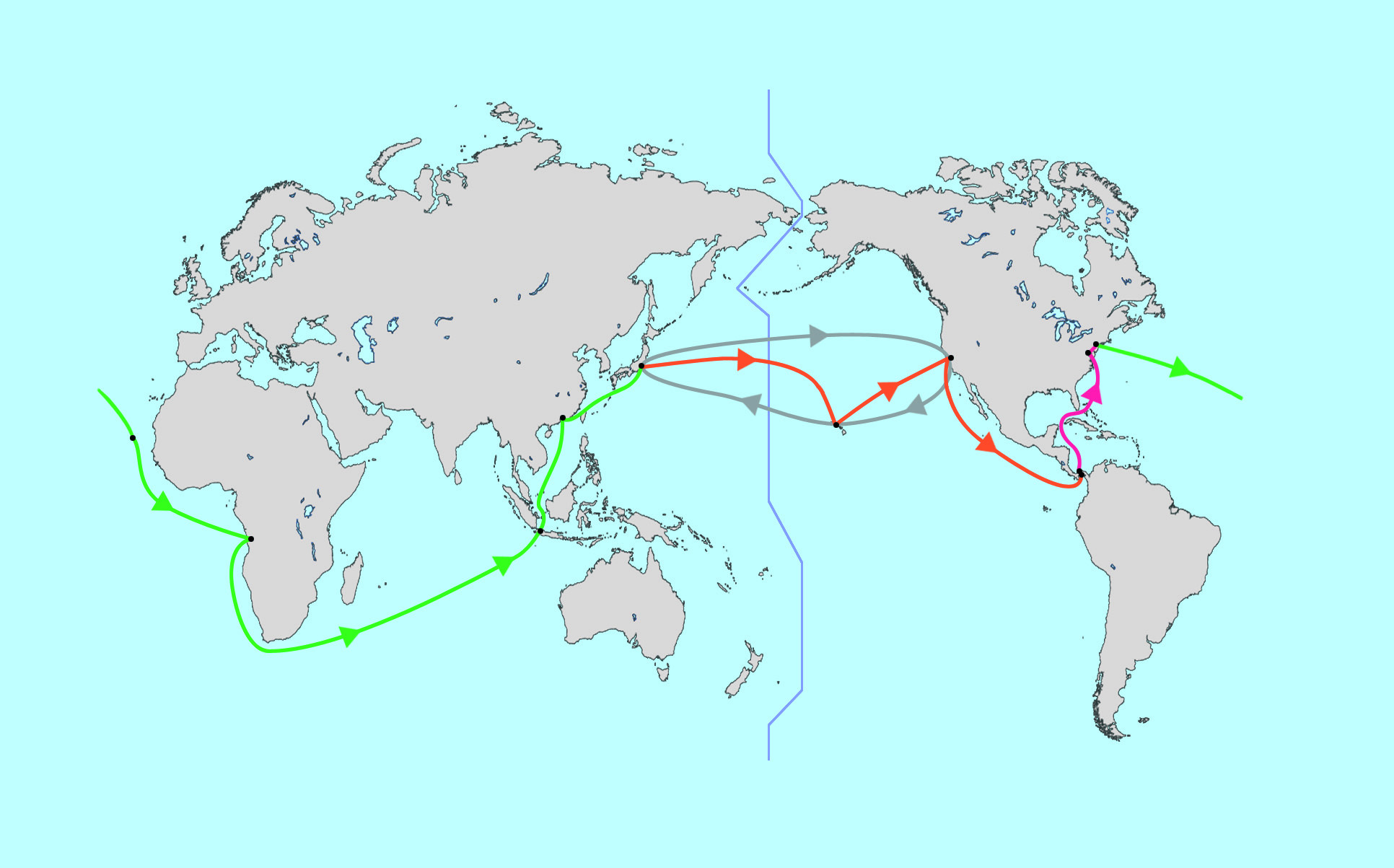


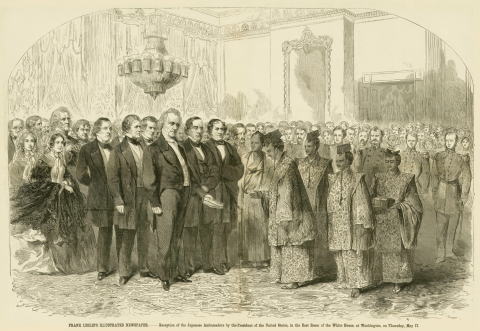
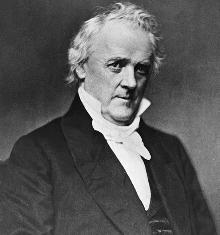



 荷物を運ばされる奴隷。
荷物を運ばされる奴隷。